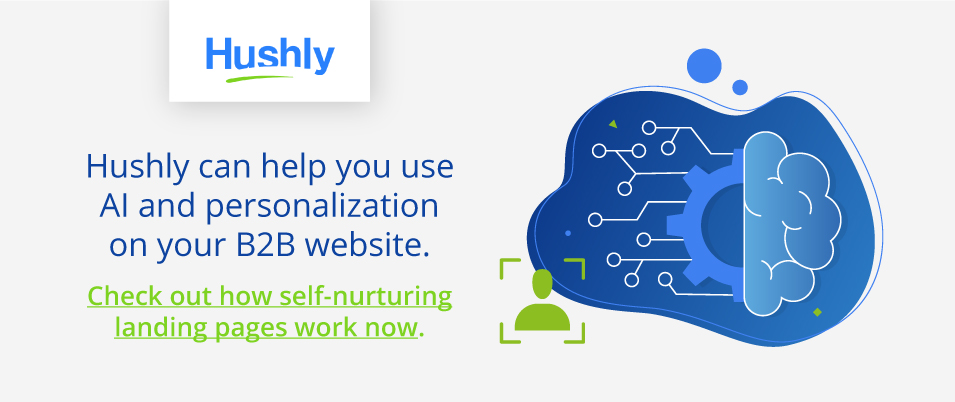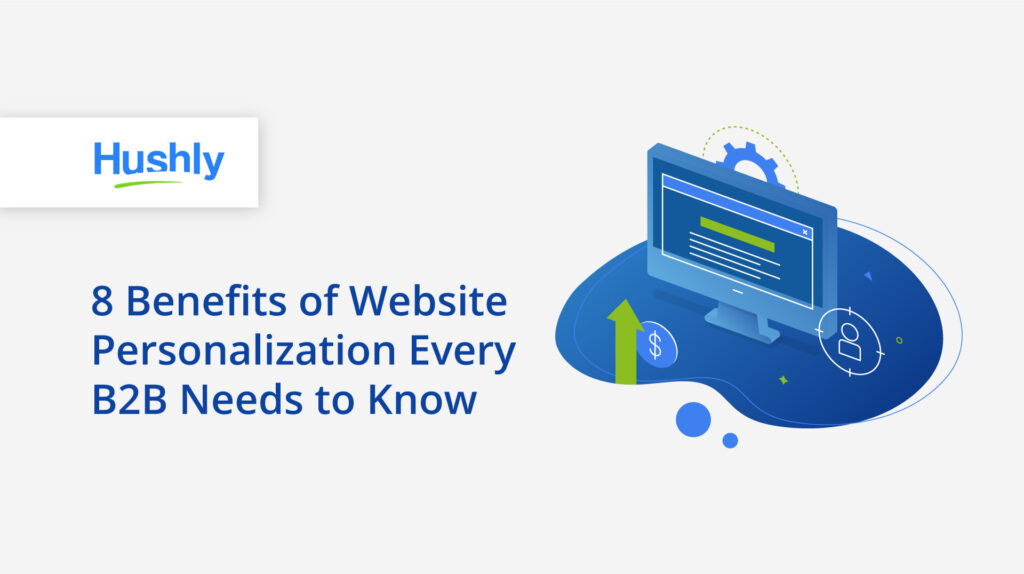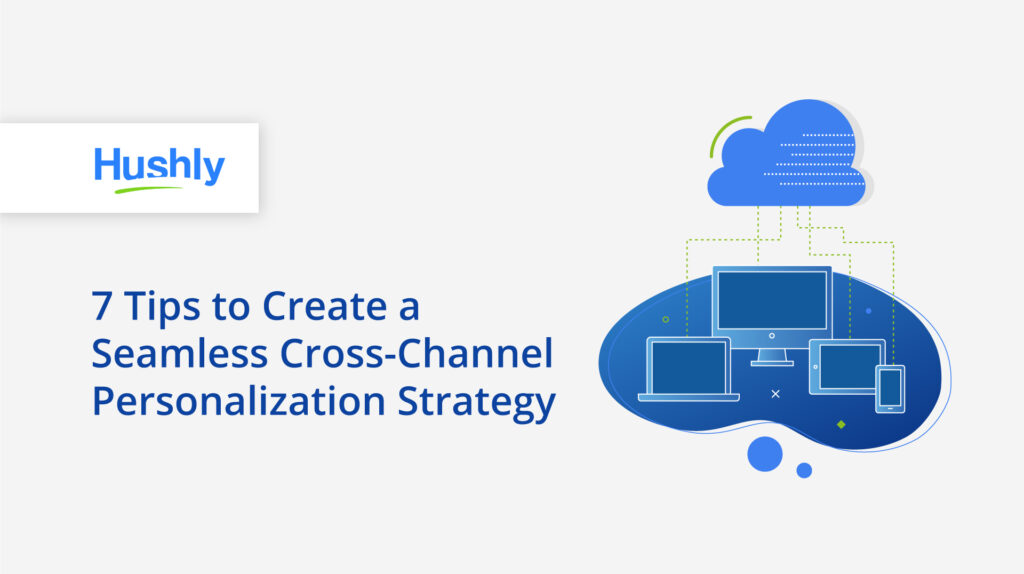Filters
Content Type
Topic
Everything B2Bs Need to Know About Machine Learning for Personalization

B2Bs are no stranger to the benefits of personalization these days.
However, they are struggling to optimize their personalization strategies.
Research shows that 80% of B2Bs will abandon their personalization strategies by 2025, citing poor ROI and data issues.
Machine learning for personalization offers a solution. Instead of working through data retroactively, AI-driven machine learning tools let you provide unique content to every visitor – whether known or anonymous.
Here are a few things B2B marketers should know about using machine learning.
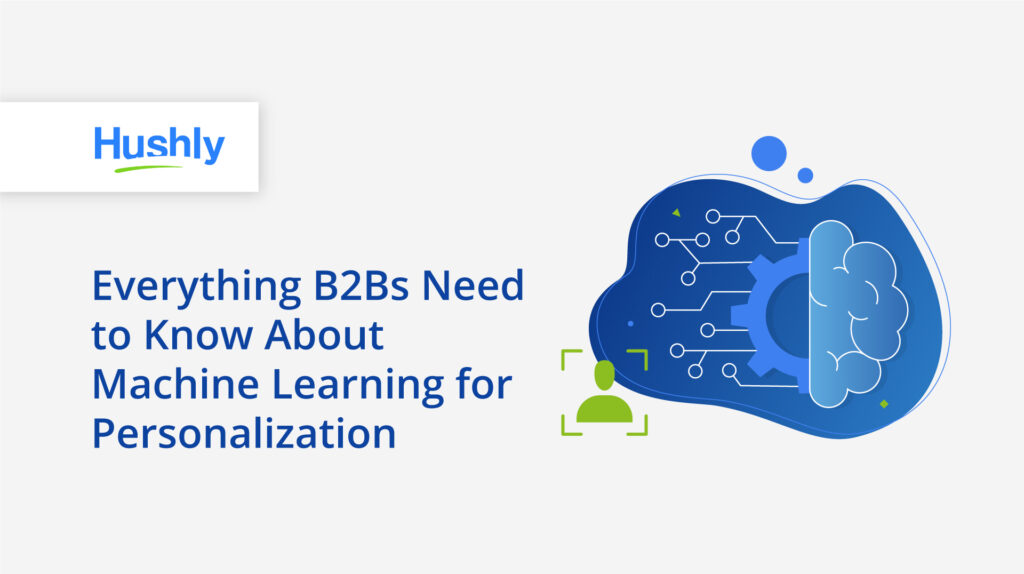
What B2Bs Should Understand About Machine Learning for Personalization
For your personalized marketing to succeed, you need machine learning and AI for content distribution.
Machine Learning for Personalization Drives Dynamic Content
Dynamic content can be obvious or subtle.
When you visit some of your favorite B2C websites, they might automatically show shipping information or coupons for your geographic region.
However, dynamic content can also be more subtle. On consumer sites, it might include monitoring which products you view and offering personalized product recommendations.
On your B2B website, dynamic content could include personalized content recommendations like blogs, eBooks, and case studies. Algorithms and machine learning could monitor what a visitor browses on your website and suggest relevant pieces of content.
Instead of digging through your blog looking for interesting content, AI hand selects and provides relevant content recommendations to each visitor. Content is always dynamic because each visitor gets a unique experience.
Machine Learning for Personalization Helps You Learn About Customers
If you want to create personalized content for your audience segments, you have to learn about your audience. You must understand your targeted audiences on a deeper level than your competitors.
Most marketers start learning about their audience by analyzing on-site analytics.
Which pieces of content do they consume? What conclusions can you make based on that? Consider the following visitor demographics:
- Stage of the buying cycle
- Job role
- Company name
- Company market share
- Company size
When you employ AI-driven machine learning on your website, visitors will naturally view more relevant pieces of content. As that happens, you can study deeper insights about your audience. You can draw better conclusions and use them to create content.
It Uses Several Algorithms on Top of Each Other
When you type a keyword into the Google search bar, several algorithms work together to craft unique results.
Many people assume Amazon, Google, and others use one massive algorithm to determine their content. However, it’s actually several working algorithms on top of each other:
- Collaborative filtering: The algorithm looks for patterns in similar visitors to recommend pieces of content.
- Session-based similarity: It suggests pieces of content based on visitors who viewed the same pieces of content.
- Content similarity: Visitors get personalized recommendations based on the copy in the content they’re consuming.
- Importance: Administrators can decide which pieces of content are “important.”
- Trending: Visitors are recommended pieces of content based on their popularity.
Tiger King would be a combination of importance and trending algorithms.
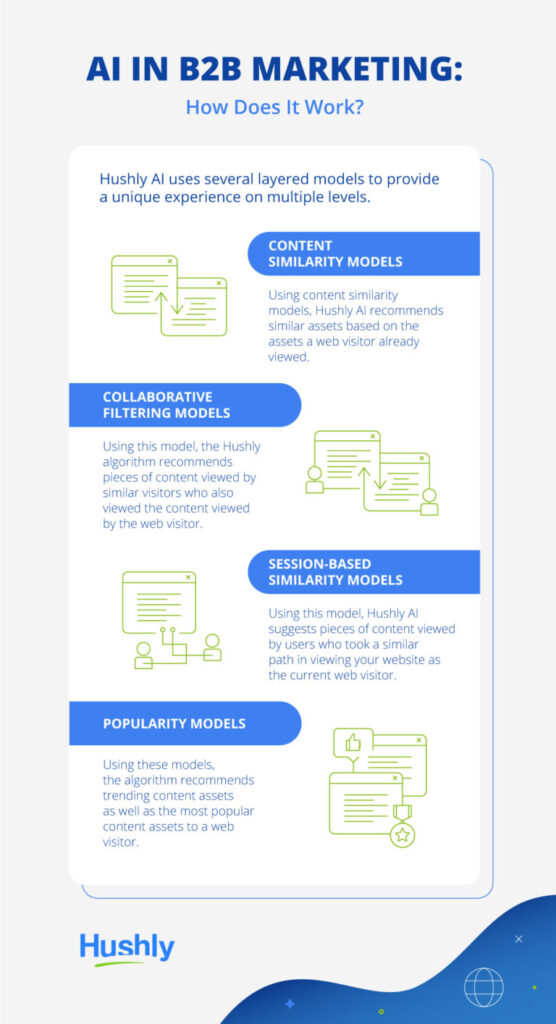
Machine Learning for Personalization Improves the Buyer Experience
85% of buyers say they’ll dismiss a brand that doesn’t personalize the first touchpoint.
B2B buyers expect personalized experiences just as much as their consumer counterparts. It’s important to remember that B2B buyers are also consumers for the 16 hours they’re not at work each day.
Machine learning makes it easier for buyers to find the information they need on your website when they need it without much effort.
It Helps Guide Leads Down the Sales Cycle
AI-driven personalization recommends content to each visitor based on intent data.
Intent data tells you where a visitor is in the sales funnel.
The content isn’t just relevant – it’s also carefully selected to guide visitors down the sales funnel. It provides a gentle nudge instead of bombarding visitors with aggressive sales tactics.
For example, after viewing a piece of content on the benefits of personalization, the algorithm might recommend a blog with a case study. The goal is to gently guide visitors towards a conversion – even before you’ve collected their contact information.
Machine Learning for Personalization Uses Real-Time Data
Most marketers attempt to personalize their digital experience retroactively: They identify patterns, offer relevant pieces of content, and hope for the best.
Instead, AI-driven personalization uses real-time browsing data and intent data to personalize every experience for every visitor every session.
Content is more effective – it can boost lead conversions by 51% – because it’s based on the most current data available.
It Makes Account-Based Marketing Easier
Companies running ABM strategies generate 208% more revenue than those that don’t.
Account-based marketing is a natural by-product of personalization.
Instead of analyzing data to identify company patterns and stage of the buying cycle, artificial intelligence and machine learning take over automatically.
The AI algorithms can use a visitor’s IP address and other data to figure out which company a visitor works for and provide them with relevant content.
Personalized Marketing and Machine Learning Tools You Need to Know
Now that you understand how machine learning can benefit your marketing personalization, it’s time to go over a few tools you can use.
AI and personalization go hand-in-hand. Instead of working through massive data sets retroactively, AI lets you personalize every visitor’s browsing experience. Here’s what it looks like in practice:
- Self-nurturing landing pages: Let leads educate themselves at their own pace and guide them down the sales funnel with self-nurturing landing pages.
- Adaptive content hubs: Organize your best content and offer personalized content recommendations with the power of machine learning.
- Content bingeing features: Bring the same user-friendly personalization format of Netflix to your B2B website.
- Personalized exit-intent popups: Most brands confront visitors with lead forms as they try to leave the site. Instead, offer more personalized content recommendations through AI-driven exit-intent popups.
While the details of how machine learning works can get complicated, taking advantage of the benefits don’t have to be.
Hushly can help you use AI and personalization on your B2B website. Check out how self-nurturing landing pages work now!
The post Everything B2Bs Need to Know About Machine Learning for Personalization appeared first on Hushly.

